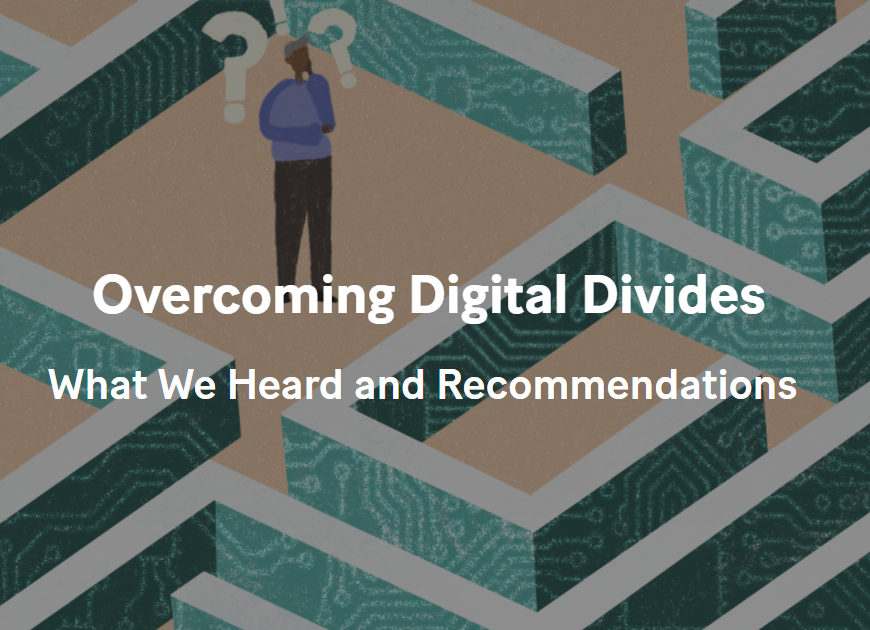Overcoming Digital Divides

This report summarizes the main themes shared at the six workshops, as well as sharing new data on these issues from Statistics Canada’s latest survey from November 2020 to March 2021:
-
Internet infrastructure: Too many rural, remote and Indigenous communities still lack the internet infrastructure necessary to bring sufficient connectivity to every home. Emerging initiatives, such as the expansion of low-Earth orbit satellites, are a promising step in expanding internet access to places not connected to fibre-optic cables and providing faster data transfer rates.
-
Affordability: Although progress in expanding internet availability through infrastructure development is accelerating, governments need to place renewed emphasis on and expand programming to ensure affordable connectivity for lower-income households.
-
Digital literacy and skills: Underserved groups, particularly older adults and marginalized youth, depend on digital literacy and skills programming to get access to devices and software, and better understand how technologies work; how to protect their online safety; and how to develop the right critical thinking skills necessary to meaningfully and safely engage in online spaces.
-
Public internet access: Public libraries, community centres and Wi-Fi hotspots are a critical point of digital access for individuals without consistent or reliable home internet access and will remain crucial for hard-to-reach individuals left out of the telecommunications market system.
-
Impact of the COVID-19 pandemic: The expansion of remote work and online delivery of critical services impacted many vulnerable groups, including low-income individuals, older adults, and people with disabilities, who were often isolated and excluded from online spaces and information while simultaneously being at a higher risk of contracting and experiencing more severe illness from COVID-19.
-
The role of government in supporting effective multi-level coordination: Private, public and community organizations tackling digital divides across the country are often working in disconnected silos, which is diminishing the effectiveness of improving systemic digital connectivity. Canada’s strategy to expand internet connectivity to all people in Canada still lacks an outcome-focused and coordinated approach.
POLICY RECOMMENDATIONS
Based on the advice and discussions from the workshop series, we offer five main policy recommendations to address Canada’s digital divides moving forward:
-
Develop a comprehensive strategy to close Canada’s digital divides, including setting targets for the proportion of Canadian residents connected to sufficient digital services, not just the availability of basic connectivity, and guided by new research that more granularly identifies specific communities facing gaps in internet access and connectivity.
-
Expand the eligibility of affordability initiatives that subsidize the provision of internet services to include all individuals below the poverty line and ensure services are provided at sufficient speeds.
-
Explore new public funding models that invest in community-based and owned networks to increase public access, community control and competition, in particular by working with Indigenous communities and municipalities not yet connected to sufficient service.
-
Develop a cross-sectoral network of public, private and community organizations to coordinate initiatives focused on enhancing digital literacy, and access to devices and software, for underserved and vulnerable communities, such as older adults, youth, low-income individuals, and people of colour.
-
Strengthen accessibility standards and initiatives to remove digital inclusion barriers for people with disabilities, including greater enforcement mechanisms.
Read the full report here.
-
By
Amaan Fazal
-
Published
Dec 05, 2022
-
Subject Area
-
Audience
-
Category
